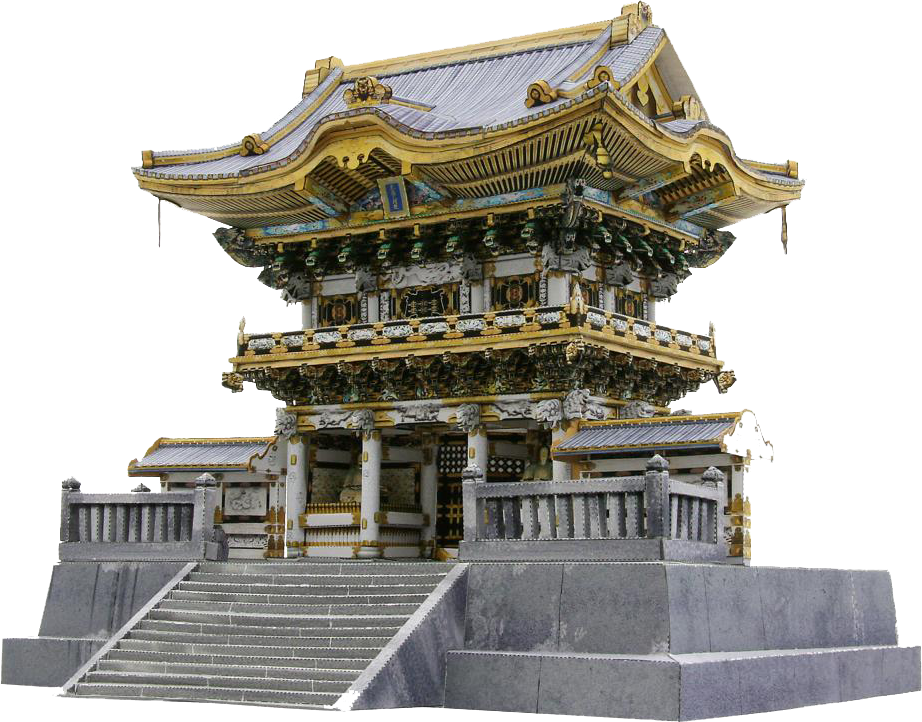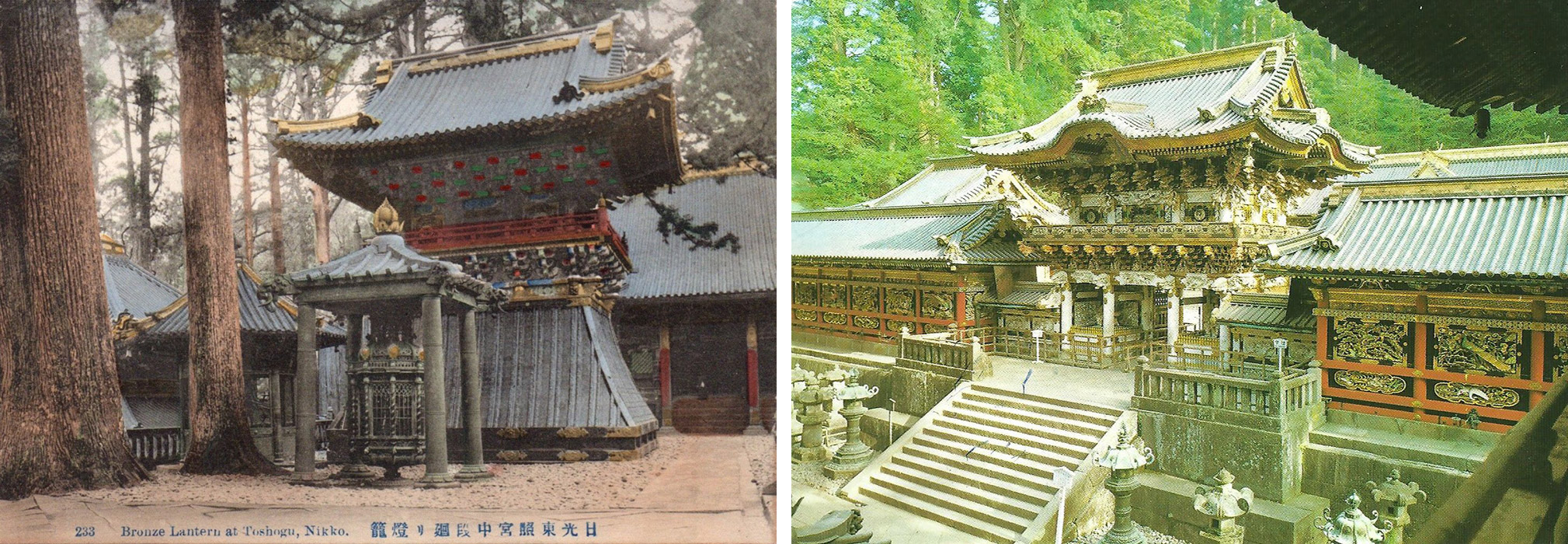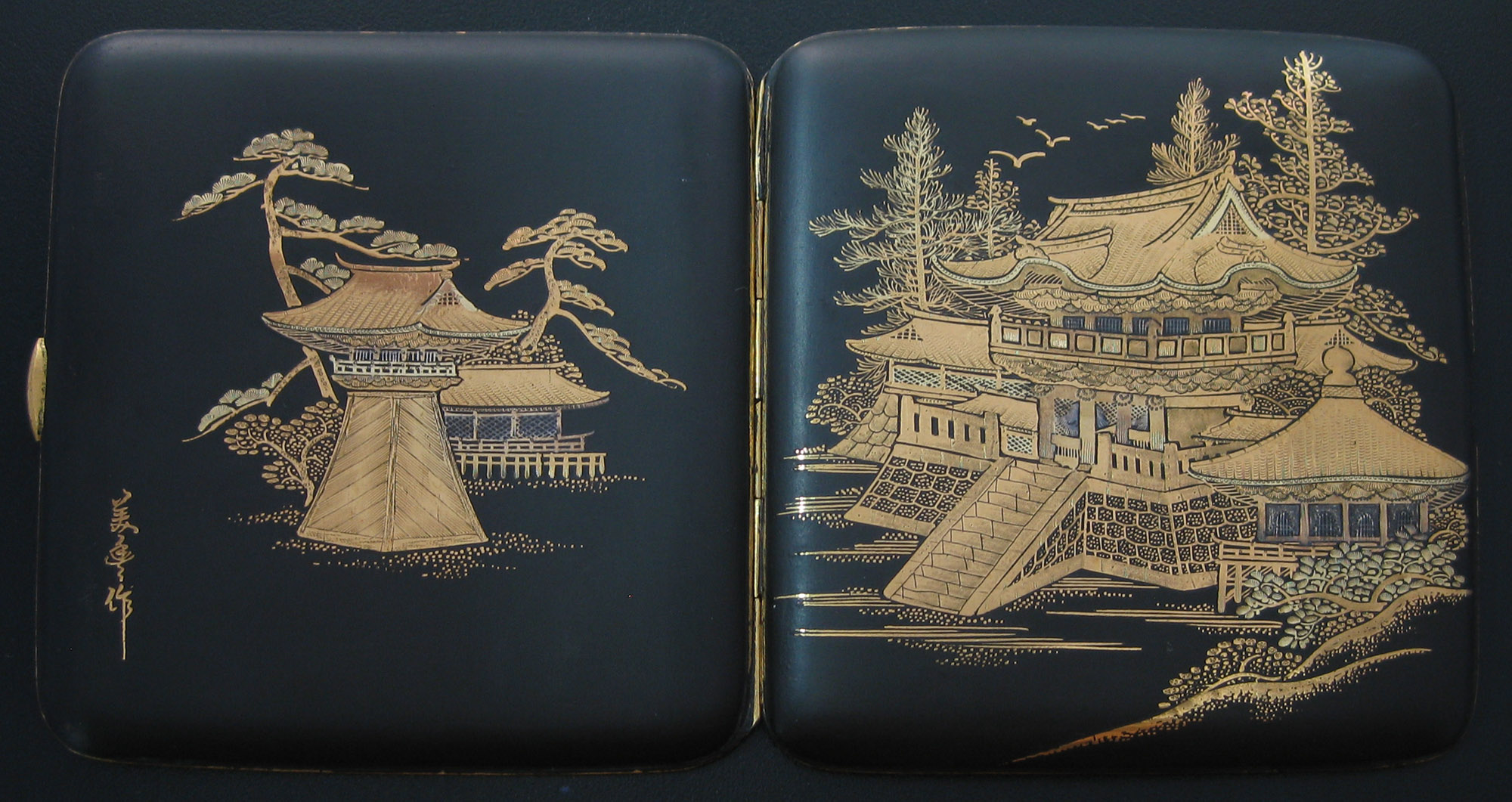



Top: Two postcards depicting the structures of the Tosho-gu shrine: the bell tower (left) and the Yomeimon gate (right). Bottom: a cigarette case by Fujii Yoshitoyo (from my collection), with the same scenes.




Top: Two postcards depicting the structures of the Tosho-gu shrine: the bell tower (left) and the Yomeimon gate (right). Bottom: a cigarette case by Fujii Yoshitoyo (from my collection), with the same scenes.
© Copyright Georgiy Shoulga. All Rights Reserved.